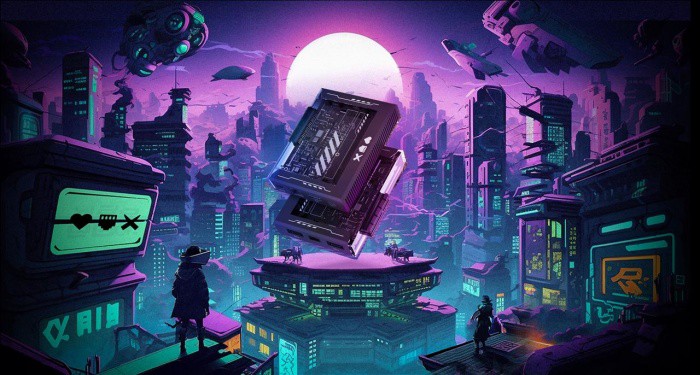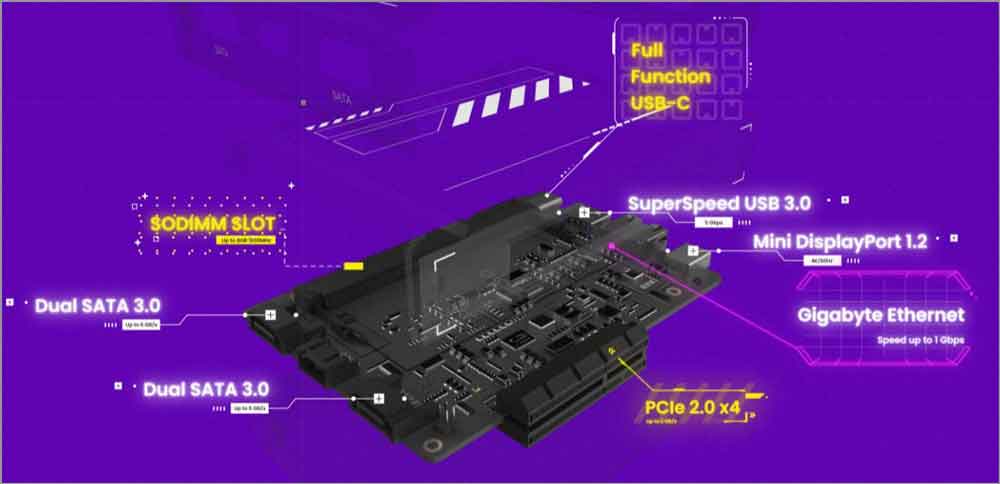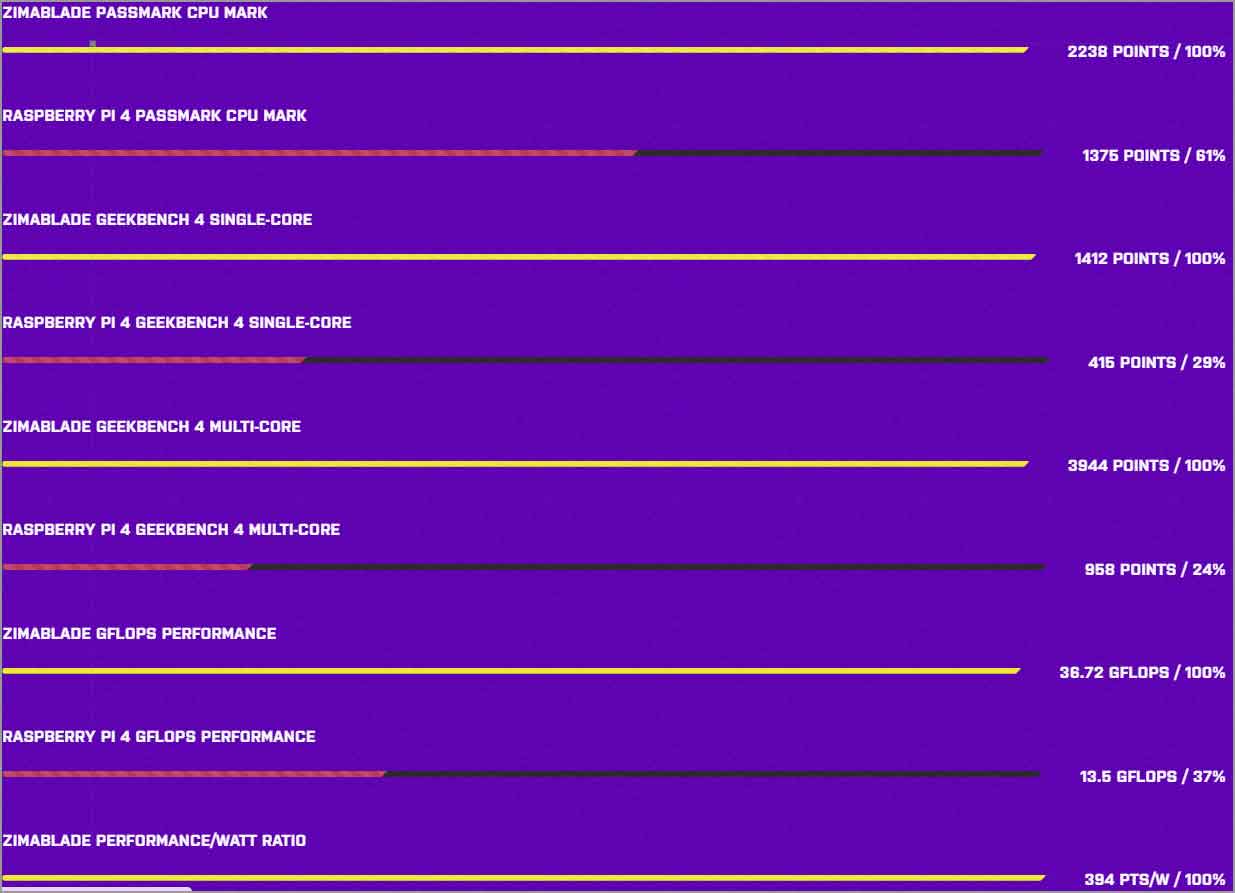Is ZimaBlade the best Single Board Server for security, privacy, storage and everything else? We find out in the next few minutes.
If you too are fed up with the constant digital monitoring, intrusion and just payments for storage/media streaming, this ZimaBlade review is just for you.
I can keep talking, or you can start reading. Let’s do the latter eh?
Table of Contents
What is the ZimaBlade?
ZimaBlade is a Single Board Server. I recently used their ZimaBoard 832 which made me give this newer, unique “Blade” a try as well.
So, this one’s not fully in production yet. It’s being crowdsourced. However, small batch trial productions have already started. You can order it from Crowdsupply for just $64.00
The primary purpose of the ZimaBoard is to let you create a personal, secure server that protects your privacy/data but of course it has other uses.
Primarily, you can use it as your ZimaBlade personal NAS, a cloud storage, cloud backup or even Plex media server. It can be used to play retro games, build your own secure VPN, or even as Promox HA clusters for more stability and uptime. The opportunities are endless.
Operating System
The ZimaBoard is primarily armed with CasaOS. It’s a modern, intuitive OS whose primarily powers lie with home automation. Of course, you can use it for so much more.
By default, it offers an elegant file manager, browser, terminal and whatever’s missing can be downloaded from the one-click app store.
Its run on the ARM architecture which obviously means you can install pretty much any OS on this SBS. The list includes but isn’t limited to Android, Linux, Windows, Raspberry Pi and so on.
Hardware specs
I personally call the ZimaBlade a passport SBS. Passport because it’s probably the size of two passports put together, roughly at least.
It’s 107 x 80 x 23mm in size and it’s pretty lightweight too at 175g. Here’s an image that shows most of its primary features:
It does seem like something you can carry in your pocket, doesn’t it?
Two CPU options
Unlike most other SBSs, the ZimaBlade doesn’t have a specific CPU attached to it. Rather, you get to choose from two options.
You can either go for the Intel Celeron Quad Core Processor (Turbo Speed 2.2GHz) or the Intel Celeron Dual Core Processor (Turbo Speed 2.4 Ghz).
Of course, the primary difference is in the number of cores and maximum clock speed.
32GB eMMC Storage + 2X SATA 3.0 ports
Just like with the Zimaboard 832, the ZimaBlade too comes with 32GB eMMC storage. I’ll be honest, being eMMC, do not expect SSD or even SATA level performance off the storage.
Also, the in-built storage itself isn’t “expandable”. It’s fixed.
However, you can always use its 2X SATA 3.0 ports. These can be used to attach almost anything to your ZimaBlade. Speed isn’t an issue either with these SATA 3.0 ports as they max out at an impressive 6Gbps.
Or, you could simply opt for the ZimaBlade NAS Kit. The bundle includes the ZimaBlade + 16 GB RAM + 12V/ 3A power adapter + 4k @ 60 Hz Mini DisplayPort male to female HDMI cable, type-C cable and a lot more.
1x Gigabit Ethernet Port
Of course it wouldn’t be much fun if this was a cold device without external conectivity now, would it?
To solve that, The ZimaBlade offers us 1 Gigabit Ethernet port that can be used to connect anything, either your internet or local systems.
Would I love more ports? Certainly. Does 1 port do the job? Definitely. At the end, we need to remember it’s not a traditional computer and even those don’t often have multiple Ethernet ports.
1x PCIe 2.0 4 Lane
No one’s expecting to play GTA V or edit a movie on the ZimaBlade and yet we need good graphics, don’t we?
By default, the ZimaBlade comes with the integrated graphic which depends on the CPU you’ve selected. You get a 750MHz that capable of getting you off the ground and get started.
But then, it has a PCIe slot ,4 lanes. This ensures you get to attach a graphic card of your choice to the ZimaBlade. The 4 lanes give you the speed and compatibility that some of you may be looking for.
4X USB ports
I love my ports, specially with a SBS. Let’s be honest, unlike a phone or a tablet, these do require quite a bit of third-party connectivity.
Now, the ZimaBlade has a total of 4 ports. Two USB 3.0 ports, one is for Type-A inserts and the other for Type-C.
These are what you’ll be using for the most part, connecting all your external storage & media devices to.
There’s another USB port, a 2.0. Yes, it’s not very 2023 but not everything needs to be superfast, don’t you agree? Plus, when needed, those 2 X 3.0 ports totally exist.
RAM (Memory)
The ZimaBlade has a SODIMM slot that you can use to expand the RAM on the device.
It’s compatible with up to 16GB of DDR3L which in my personal opinion is enough for nearly everything out there, isn’t it?
Frequently Asked Questiosn
By now you should have a decent idea of the ZimaBlade, don’t you? All the same, I’m sure you’ve got a few questions you’d like answered. Allow me to help with those.
1. Is the ZimaBlade launched yet?
Yes. Zimablade even though hasn’t hit full commercial productions yet, they’re producing it in small batches. As far as any individual customer like you is concerned, you can order it right away.
2. Which is better, ZimaBlade or or Raspberry Pi 4?
Raspberry Pi 4 has made quite a name for itself, and it deserves it all. However, in terms of hardware, features, compatibility it doesn’t really stack up to what the ZimaBlade is currently offering.
I could write a long paragraph here, or just give you numbers, numbers backed by facts and tests.
According to the tests above, I’d say the ZB outperforms the RBPi4 by quite a margin, wouldn’t you?
3. Can I access the ZimaBlade remotely?
You most certainly can.
ZimaBlade review- Final verdict
So, what’s my personal opinion of the ZimaBlade? I can’t say I don’t like it. It does everything I expect a SBS to do for me and then its expandiblity fills in any gaps that exist.
The CPU is pretty powerful too. It’s not just the CPU either. At this price point, there’s almost no other company offering similar hardware specs.
I also love the fact that I can choose a CPU option and bloatware isn’t just installed on the system by default, I get to choose the apps I want.
Overall, for $64.00 I can’t really complain. The best advice I can impart on this ZimaBlade review is for you to go try it on your own.



